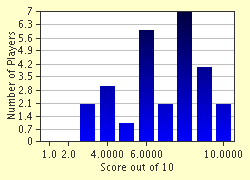Quiz Answer Key and Fun Facts
1. Which track that hosted the French Grand Prix on four occasions in the 1960s and 1970s is also known as the Circuit Clermont-Ferrand?
2. Crowdfunding is not a term that is usually associated with F1, but which team used this novel approach to raising money in order to fund their attendance at the final race of the 2014 season?
3. Jim Clark, the F1 world champion of 1963 and 1965, was killed in an F2 race in 1968 at which tree-lined circuit that has since hosted numerous editions of the German Grand Prix?
4. The 1981 F1 season included the first grand prix to be held in the car park of a casino. By what title was this race known?
5. The 1978 Canadian Grand Prix saw the first F1 victory by a Canadian driver. Can you name him?
6. Which country hosted its first F1 grand prix in 2004, an event won by Rubens Barrichello and the Ferrari team?
7. Which driver, who gained an unfortunate nickname thanks to his record of crashing out of races, was Michael Schumacher's first team-mate in F1?
8. The Ford Cosworth DFV engine dominated F1 from the late 1960s to the early 1980s, powering a total of nine different drivers to the world championship title. True or false?
9. In F1 it tends to be the drivers that take all the accolades and gain fame and fortune. However, one engineer whose name deserves to be remembered is that of Colin Chapman, the legendary founder of which highly successful F1 team?
10. In 2006, Scottish racing driver David Coulthard achieved what peculiar F1 'first'?
Source: Author
Fifiona81
This quiz was reviewed by FunTrivia editor
gtho4 before going online.
Any errors found in FunTrivia content are routinely corrected through our feedback system.


